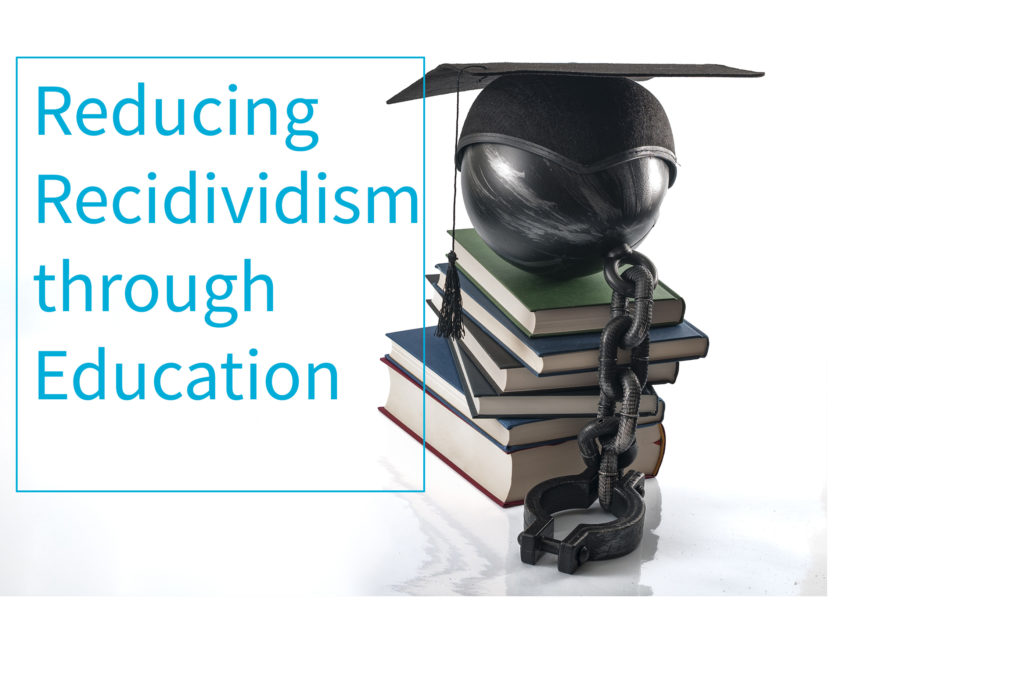The United States has the highest incarceration rate in the world with nearly 2.3 million people currently imprisoned. A majority of these prisoners eventually wind up back in prison after being released. In fact, half of federal convicts are rearrested eight years after their release date, according to the U.S. Sentencing Commission.
Those are pretty dismal numbers.
But researchers have found that the odds of returning to prison are 43 percent lower if inmates are offered educational programs while incarcerated. As it is 41 percent of inmates are lacking a high school diploma and only 24 percent have received any sort of postsecondary education at all, according to the Center for American Progress, a non-partisan policy organization, yet, only 35 percent of state prisons provide college education courses, according to a 2016 study by the Vera Institute of Justice.
The Vera institute’s recent findings is that only 9 percent of prisoners complete a college program. The institute states that“formerly incarcerated people who re-enter the labor market with greater levels of education are more likely to find employment and less likely to return to prison, potentially improving social and economic outcomes for their communities, families and themselves while leading to significant savings to states.” This would initially result in recidivism rates decreasing which could in turn reduce incarceration costs by 365.8 million per year.
Many countries are offering inventive, productive programs to rehabilitate and prevent recidivism. Uruguay, for example, offers vocational and educational programs which in turn results in only 10 percent of inmates returning to prison within five years of being released. India offers free study and vocational programs for their prisoners, with some even receiving their masters degrees while incarcerated.
The advance of education through technology can help prisoners find direction and skills to succeed in the outside world. Belgium provided inmates with flat-screen computers to keep up with changing technologies, so that when released they are not overwhelmed by the vast amount of advances in modern technology. Right now in the United States, incarcerated students have very little use of technology and only 14 percent possess access to the internet. If the United States begins to implement educational programs integrated with technology, following in Belgium’s footsteps, the results would be undeniable.
Each prisoner has varying educational requisites. One prisoner may have a GED or high school diploma while another may have little to no educational background whatsoever.
Now imagine Oncourse, a cost-saving program and software that would specifically test each inmate’s academic level and recommend courses that would meet their individual needs.
According to Cuesta College, Comevo’s very first client for online orientation software, various colleges in the United States participate in a program that is implemented nation-wide which “allows prison inmates to take college courses via federal funding.” Cuesta College is one of the five colleges throughout California that participates in this program otherwise referred to as the Second Chance Pell Grant program, with 67 colleges and universities participating nationwide. In 2017 Cuesta College began to apply this service to inmates at the California Men’s Colony.
Cuesta College was one of the pilot colleges chosen to “test how the participation in high quality education programs increases after expanding access to financial aid for incarcerated individuals.”
Daniel Caldwell, a former Cuesta College Student Body President was once incarcerated and because of his ability to receive credits while in prison. Caldwell stated that “it gave me the confidence back in myself to know I can still better myself and look forward to something different and positive. In order to keep moving forward an incarcerated individual needs acceptance from the community they choose to become a part of.” Caldwell moved on to get an AA in electro-Mechanical Engineering from Cuesta College, a Bachelor’s in computer science from CSU Monterey and entered the Master’s degree program in Computer Science at Cal Poly Sate University in San Luis Obispo.
With the Second Chance Pell program beginning in 2016, with now 64 colleges supporting this initiative, according to Inside Higher Ed around 1,000 students participating in this program have graduated with college degrees or some form of postsecondary certificate.
Imagine if educational programs were expanded in the U.S. prison system, with programs like the Second Change Pell expanding, with other educational programs put into action as well. Imagine if released prisoners could find stable jobs, giving them the opportunity to succeed rather than reoffend.






